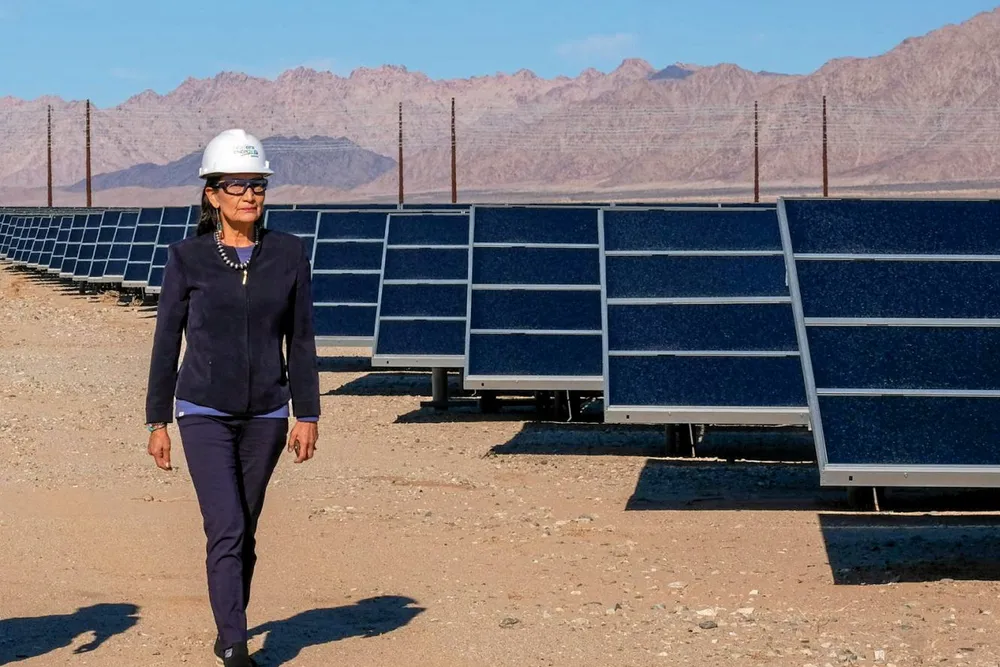US blasts through clean energy approval goals under Biden and Trump
Onshore renewable energy approvals have reached 29GW, surpassing legal mandates

The US Department of Interior (DoI) has facilitated development of more than 44GW of clean energy capacity on federal lands and waters, including 8.16GW onshore and 15GW offshore since President Joe Biden took office in January 2021, according to the executive cabinet-level agency.
DoI, which manages about one-fifth of the country’s land as well as coastal waters of the outer continental shelf, estimates when all approved geothermal, solar, transmission, and wind projects are fully online they will enable generation of enough electric power for more than 17 million homes.
The 29GW of capacity on federal lands includes projects greenlighted by the prior administration of Donald Trump, who is running for a second four-year presidential term.
Congress in the Energy Act of 2020 under the outgoing Trump administration set onshore renewable energy permitting targets of 25GW by 2025. It instructed DoI to meet them through the Bureau of Land Management, one of its agencies that administers about 10% of the nation’s surface area.
Surpassing that milestone “underscores the significant progress we have made in helping build modern, resilient climate infrastructure that protects our communities from the worsening impacts of climate change,” said Interior Secretary Deb Haaland.
Offshore wind permitting has been spurred by the Biden administration's 2030 target of 30GW of capacity, which analysts widely assume will not be reached.
Coastal energy is managed by DoI's Bureau of Ocean Energy Management.
President Biden put the energy transition at the core of his administration's policy goals towards net zero by 2050 targets.
The administration is targeting 50-52% emissions reductions off 2005 baselines by 2030, along with a fully decarbonised electricity grid by 2035.
It likewise pushed passage of the Inflation Reduction Act, among the biggest climate laws ever passed that earmarks hundreds of billions of dollars in incentives to spur green energy deployment.
Polls show little between Trump, a Republican, and Vice President Kamala Harris, a Democrat, who became the party’s candidate after President Joe Biden dropped his bid for a second term. National elections are 5 November.
Trump is a vocal opponent of wind power in particular, but analysts note renewables saw healthy permitting and deployment numbers during his tenure, while oil and gas production reached records under the Biden administration.
(Copyright)